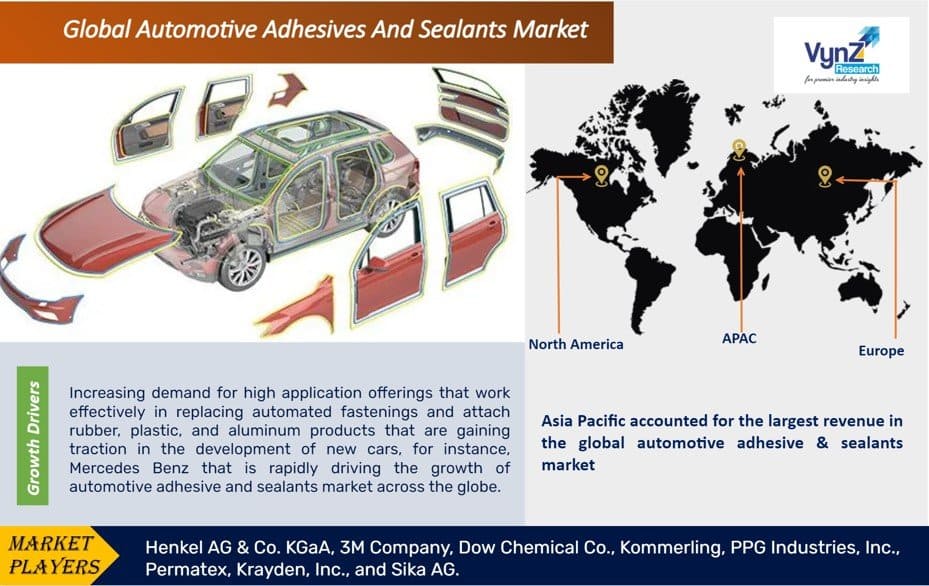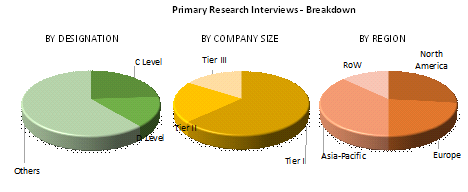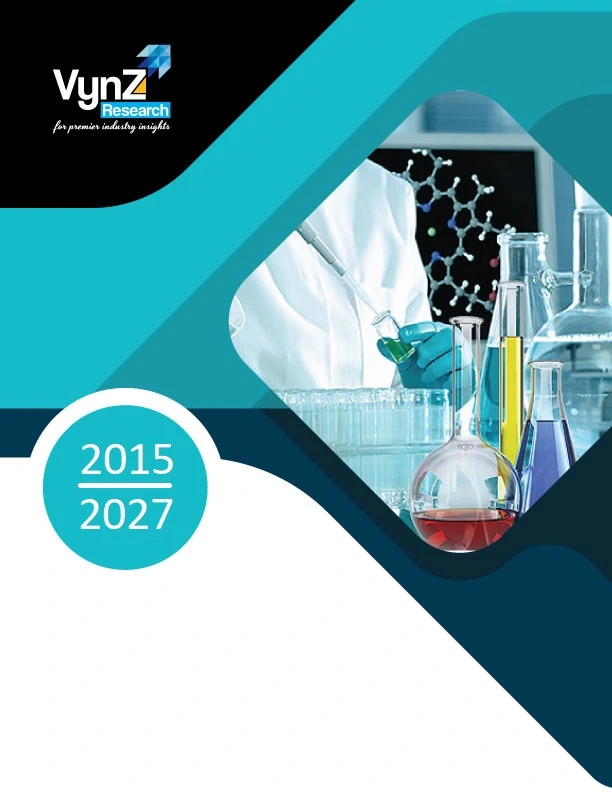Industry Overview
The global Automotive Adhesive & Sealants Market is expected to reach USD 15.6 billion by 2030, owing to increasing concerns about greenhouse gas emissions and fuel consumption that are projected to bolster the demand for adhesive and sealants in passenger as well as commercial vehicles. It is considered that approximately 5% to 8% of fuel is saved when the weight of the automobile is reduced. Additionally, the decreased weight of the automobile assists in managing the CO2 emission from the vehicles during its complete life span. Moreover, automobile manufacturers are concentrating majorly on automotive constituents that are developed from thermoplastic elastomers to upgrade automobile performance and manufacture vehicles that are lightweight.

Automotive Adhesives and Sealants Market Segmentation
Insight by Type
On the basis of type, the global automotive adhesive and sealants market is segmented into epoxy, polyurethanes, acrylics, PVC, rubber, hot melts, and silicones. Among all the segments, the global epoxy segment has been contributing the largest revenue of USD 4.2 billion in 2023, registering a CAGR of 6.5% during 2025-2030.
Insight by Application
Based on application, the global automotive adhesive and sealants market is segmented into UTH and power train, assembly, paint shop, and BIW. Among all these applications, assembly was the largest application area in the market in terms of value.
Global Automotive Adhesives and Sealants Market Report Coverage
|
Report Metric
|
Details
|
|
Historical Period
|
2018 - 2023
|
|
Base Year Considered
|
2024
|
|
Forecast Period
|
2025 - 2030
|
|
Market Size in 2024
|
U.S.D. XX Billion
|
|
Revenue Forecast in 2030
|
U.S.D. 15.6 Billion
|
|
Growth Rate
|
XX%
|
|
Segments Covered in the Report
|
By Application, and By Type
|
|
Report Scope
|
Market Trends, Drivers, and Restraints; Revenue Estimation and Forecast; Segmentation Analysis; Impact of COVID-19; Companies’ Strategic Developments; Market Share Analysis of Key Players; Company Profiling
|
|
Regions Covered in the Report
|
North America, Europe, Asia-Pacific, Middle East, and Rest of the World
|
Industry Dynamics
Automotive Adhesives and Sealants Market Growth Drivers
Increasing demand for high application offerings that work effectively in replacing automated fastenings and attach rubber, plastic, and aluminum products that are gaining traction in the development of new cars, for instance, Mercedes Benz that is rapidly driving the growth of automotive adhesive and sealants market across the globe.
The automotive adhesive and sealants market is observing significant growth, owing to increased regulations for fuel by government agencies, enhanced emphasis upon the utilization of insubstantial constituents, and increased prominence upon safety norms and regulations. Moreover, in contrast to cast iron and steel constituents, lightweight materials do not have the capability to be bolted or welded to combine them with each other. Additionally, to develop and maintain the reliability of lightweight vehicles, the utilization of adhesive and sealants is rapidly increasing by the automotive manufacturers across the globe thereby bolstering the demand for the automotive adhesive & sealant market across the globe.
Automotive Adhesives and Sealants Market Challenges
Increasing volatility in oil prices and low awareness levels regarding the advantages and usage of adhesives and sealants is expected to hinder the growth of the automotive adhesive and sealants market in the near future. Moreover, the development of stringent regulations and norms by government agencies for the usage of adhesives across several developed and developing economies is further hampering the growth of the automotive adhesive & sealants market.
Recent Developments By the Key Players
LabVantage Solutions collaborated with Henkel AG & Co. KGaA to integrate LabVantage LIMS and SAP Product Lifecycle Management (PLM) solutions into Henkel’s core R&D 4.0 platform for its consumer businesses. This strategic decision shall help in advancing innovation, sustainability, and digital transformation within its organization.
Sika Corporation’s Roofing & Waterproofing team has launched SikaShield branded Modified Bitumen roofing products and a new “Hybrid” membrane into the U.S. market.
Automotive Adhesives and Sealants Market Industry Ecosystem
Globally industry players are leveraging market growth by developing strategies to advance stiffness in vehicles, enhance crash robustness, and decrease fatigue of the material, which is ultimately concentrated upon the reduction of weight of the vehicle. The key players are concentrating on enhancing the integrity and design of the vehicle along with meeting the increasing demand of electric vehicle consumers which is ultimately contributing towards the growth of the global automotive adhesive and sealants market.
Automotive Adhesives and Sealants Market Geographic Overview
Geographically, Asia Pacific accounted for the largest revenue in the global automotive adhesive & sealants market in 2023 and is further expected to become the largest revenue holder in this market by 2030. The increasing growth of this market is accounted for extensive manufacturing capacity for passenger vehicles and the LCV segment in this region that is projected to hold approximately 50% of the global manufacturing process. Additionally, accelerating demand for LCV and passenger cars in this region is exaggerating the demand for automotive adhesives and sealants in Asia-Pacific. Increasing disposable income, mounting economy, and improved standards of living of the citizens in countries such as China and India, are the major factors attributed to the increasing growth of the automotive adhesive and sealants market. However, extensive production volume and stringent government regulations in the automotive sector in this region have majorly contributed to the popularity of adhesives and sealants. Moreover, all these factors are strengthening the growth of the automotive adhesive and sealants market in Asia-Pacific.
Automotive Adhesives and Sealants Market Competitive Insight
The Automotive Adhesives and Sealants Market report offers a comprehensive market segmentation analysis along with an estimation for the forecast period 2025–2030.
Segments Covered in the Report
- Application
- UTH and Power Train
- BIW
- Assembly
- Paint Shop
- Type
- Polyurethanes
- Rubber
- Epoxy
- Acrylics
- Silicones
- PVC
- Hot Melts
Region Covered in the Report
- North America
- Europe
- Germany
- U.K.
- France
- Italy
- Spain
- Russia
- Rest of Europe
- Asia-Pacific (APAC)
- China
- Japan
- India
- South Korea
- Rest of Asia-Pacific
- Rest of the World
- Middle East and Africa (MEA)
- South America

Source: VynZ Research




